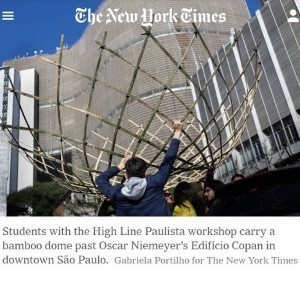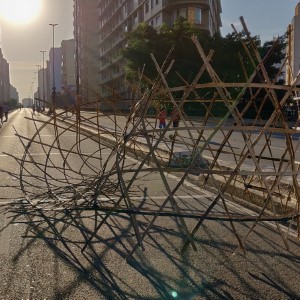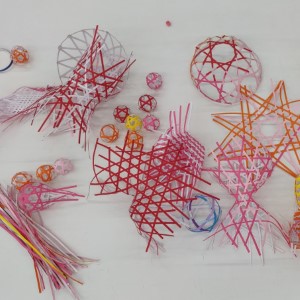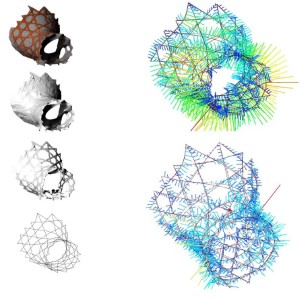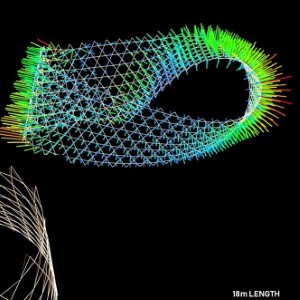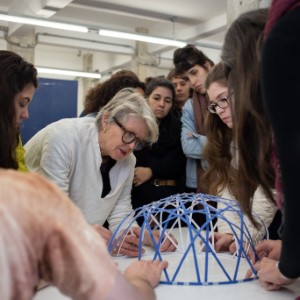Date: 2019-07-29 00:00:00 +0000 UTCTags: pavilion, computation, natural materials, research, teaching
AA Visiting School Sao Paulo - Woven Bamboo
Woven forms sing to our interest in physical geometry and efficient grid-like structural forms. Weaver Alison Martin is a master at discovering new geometric forms that can be created through the method. Format have known Alison for some time and we even have two of her paper sculptures in our office window but we hadn’t found an opportunity to work together until now.
Firstly, you should absolutely check out Alison’s Instagram HERE
Anne and Franklin of Subdivision Studio invited James and Alison to lead the AA Visiting School Sao Paulo, one of a series of visiting schools under the AA umbrella. Early in discussions it was decided to use local bamboo as the material of choice, weaving as a craft-based geometry-design method and integrated engineering methods to scale this up to human-sized structures.
The week started with hands-on experience, harvesting the bamboo from the garden of James Elkis, a highly-experienced and knowledgeable bamboo builder/engineer. This was followed by some material testing and the building of an Alison-designed dome structure.
Armed with this physical experience of bamboo weaving, the students broke into three groups and started work on proposals for bamboo architectural interventions on the Minhocao, an elevated highway that is the ongoing subject of discussion as to whether it would be better demolished or converted to a park.
The student work included proposals for the wider masterplan, for a bamboo intervention as part of this and for a portion of this to be physically built on the highway during its weekend closure at the end of the workshop.
Many groups have worked on digital tools for the creation of weaving patterns from input geometries, with multiple different algorithms available online that achieve different weave types (refs). However it remains easier (if you have an Alison) to teach the craft of weaving with paper and thus create geomtries in a bottom-up emergent way utilising human skill and intuition. Thus through the workshop a workflow emerged whereby paper-models created this way were digitised by photogrammetry, scaled-up, converted to structural models and tested, then developed further to reach something buildable. Admittedly some elements of the final structures were produced through a purely physical trial and improvement approach.
The resulting three structures all utilised woven bamboo but to achieve three completely different geometries. These, along with the test dome and a bamboo sphere created by Alison, were assembled on the Minhocao as the final act of the workshop.
Following the workshop we are even more intrigued by the possibilities of jointless large-scale woven forms and hope to experiment further with Alison in the future.
Press:
The workshop was featured in this New York Times article about Alison’s work, penned by Siobhan Roberts and photographed by Gabriela Portilho
Workshop credits:
Tutors: Alison Martin (The Weaver), James Elkis (The Bamboo Master), Anne (The environmental designer) and James Solly (The engineer) Organisers: Anne and Franklin Assistants: Samuel and Henrique Students: You were all amazing!
